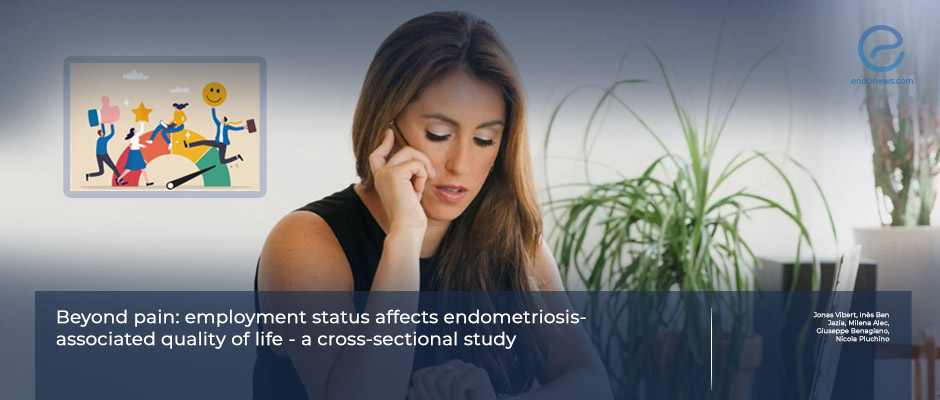Employment as an Independent Predictor of Pain and Well-being in Endometriosis
Aug 14, 2025
Job Status Tied to Endometriosis Pain and Quality of Life
Key Points
Highlights:
- Employment status is an independent predictor of health-related quality of life in patients with endometriosis.
- Being employed—full-time or part-time—is linked to lower pain scores on the Endometriosis Health Profile-30 (EHP-30)scores.
Importance:
- Employment status may serve as a proxy indicator for broader physical, emotional, and social functioning in endometriosis.
What’s done here:
- Cross-sectional analysis of 324 women with surgically or imaging-confirmed endometriosis (mean age: 32) at a tertiary referral center in Germany.
- Participants completed the EHP-30 questionnaire and provided detailed employment and sociodemographic data.
- Multivariable regression assessed associations between employment status and HRQoL domains.
Key results:
- Full-time and part-time employment were associated with significantly lower EHP-30 pain scorescompared with unemployment.
- Unemployed women actively looking for work had worse health-related quality of life.
- The association between employment and HRQoL remained significant after adjusting for age, BMI, education, and disease characteristics.
Limitations:
- Conducted in a tertiary referral center-patients may have more severe disease, limiting generalizability.
- Employed and unemployed groups differed significantly in age, likely reflecting broader workforce trends rather than a direct effect of endometriosis.
- Data were collected between 2018-2020; changes in employment policies, remote work availability, healthcare access, and awareness may influence current applicability.
From the Editor-in-Chief – EndoNews
"This study delivers a clear message—employment matters. Beyond easing financial stress, staying professionally engaged appears to protect against higher pain scores and poorer quality of life in women with endometriosis. Professional identity, social integration, and a sense of purpose may all contribute to this protective effect. Notably, part-time work offered the greatest benefit, suggesting that flexibility—not absence—may be the most therapeutic prescription.
The takeaway? Prolonged sick leave should not be prescribed without careful thought. When possible, workplace adaptations, flexible schedules, and supportive policies can preserve not only productivity but also dignity, identity, and psychosocial well-being. These findings should encourage both clinicians and policymakers to rethink how work participation fits into comprehensive endometriosis care."
Lay Summary
Employment status is a key predictor of health-related quality of life in women with endometriosis, according to a new study in Gynecological Endocrinology. Beyond pain, factors such as professional identity and social integration appear to significantly shape the disease burden.
In this cross-sectional study, Dr. Nicola Pluchino and colleagues from Lausanne University Hospital, Switzerland, assessed 324 women with endometriosis, mean age 32. Most participants (78.2%) had deep infiltrating endometriosis (DIE), and over one-third (34.5%) had undergone prior surgery.
Nearly two-thirds (63.2%) of the women were employed—51.5% full-time and 11.7% part-time—while 36.7% were unemployed, including 26.2% by choice.
Women who were employed reported lower Endometriosis Health Profile-30 (EHP-30) pain scores, with part-time workers showing the most pronounced benefit.
By contrast, unemployed women actively seeking work had poorer quality of life scores, particularly in social support and overall health domains.
The authors note that these findings raise an important question: Does employment help protect against worsening quality of life, or does severe disease limit the ability to work? They caution that prolonged sick leave, while intended to reduce burden, may inadvertently add to it—by compounding the psychological and social impacts of unemployment.
Research Source: https://pubmed.ncbi.nlm.nih.gov/40552705/
endometriosis pain health-related quality of life employment chronic pain

